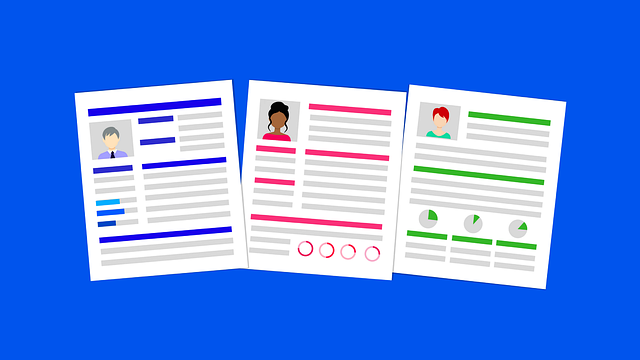Now and then a growing business will have to hire new employees to meet the increasing demands of its clients. The software development market is no different. Here at Visian Systems we continuously look for developers because of our newer projects. As we mentioned before, the hiring process doesn’t finish the moment you close the deal with the developer. There is a final stage: onboarding.
Although lots of companies ignore or don’t put much thought into their onboarding procedures, this is not a task you should overlook. Data shows that 70% of team members who had great onboarding experiences find their jobs “the best one”. To onboard new employees is not to simply welcome them into your team and show what will be their tasks. There are a lot more steps to take.
That’s the reason we chose to talk today about onboarding. In this article we’ll give a few insights into how to shape or improve your process to integrate a new professional into your team.
What is onboarding?
In a broader sense, onboarding is the whole process of integrating a new employee into the company’s team. Its main goal is the help the new staff to better adapt to the organisational culture. This increases the rates of retaining those professionals and properly affecting them. The process can take from one week to even months, it will all depend on the size and complexity of your organisation. And, of course, in how well-planned is your onboarding procedure.
But a common conception is the process should start right after the hiring. The main reason it’s when the new employees are more enthusiastic about their new job. You should use this motivation in your favour because they will be more open and interested to receive orientation. Later on, this will have a positive effect on how they feel about the company, achieving higher levels of productivity in lesser time.
That is what is most important about the onboarding process. It’s to assure the new team member will be satisfied with your organisation and keep working for the company. This reduces the possibility of restarting the whole hiring process again to look for a new professional. Now in the next topics, we are going to highlight the practices we find more crucial for excellent onboarding.
Step 1: Pre-plan your onboarding
As we said, the onboarding should start as soon as the new employee is hired. Thus you must have the planning already prepared to kick off the procedure. And, of course, the planning shapes itself around the type of company. For example, a software development business like ours will have a different approach than a company with a physical office. But the general mindset is almost the same.
The planning should covers everything starting from the “welcome kit” or any material to help the new employee to adapt to the company’s culture. And it has to consider the whole team because they also should be prepared to receive a new coworker. Make sure everyone knows a new member is joining the team and what position the person will fill by e-mail or a quick message in the company’s chat platform.
Other things your planning should cover are all the credentials and access to the company’s systems – or repositories in the case of a software development company like us – this new employee must have. And, if needed, leave instructions for any further training your new hire is going to do.
Step 2: Have an employee guide
For physical offices is rather common to have a “welcome kit” for the new employees arriving. This kind of kit usually includes basic office materials such as pens, notebooks, pen drives, identification badges, etc. For companies that operate in virtual spaces with employees across the globe, the logistics make it harder to prepare these kits. But there is one thing that all companies should have no matter what: an employee handbook/guide. You don’t even need to print any material and instead create e-books or simply PDF files easily to share.
This document should include all the basic information compiled by the company’s HR to help the new employee better adapt to its culture. Processes, company policy, basic working tools, etc. Everything your new employee may need to consult in the future. Having a checklist of initial tasks is also helpful to include with the handbook/guide.
Step 3: Meeting the team
Knowing the whole team is an essential part of the onboarding process. It helps to establish the feeling of cooperation between them and the arriving members. In our business, we like to have at least two different meetings with these new employees.
The first happens with all our active developers because eventually, they can work together on a different project. This meeting is to allow the new employees to present themselves, highlighting their skills and showing how they can contribute to the team.
The second meeting is with only the members of the project the new employees will be assigned. This meeting focus on every detail they need to know about the project, the tech stack used and the main tasks. The new employee is free to ask any question and we always try to encourage them to do it.
There could be a third meeting with the company’s CEO. But, in our case, this usually happens in the last stage of the hiring process so we don’t count it as part of our onboarding procedure.
Step 4: Assign a co-worker advisor and define performance metrics
It’s an excellent practice to assign a veteran employee as an advisor to be responsible for the new team members. The advisor should accompany them at least in their first weeks in the company. These role is really important to make the new employees less afraid to ask questions and also to have somebody whom they can turn to in the case of any problems.
With proper guidance, you can significantly reduce the time spent on the onboarding process. The advisor should also be responsible to evaluate the new members. So right at the beginning of their activities, you should establish metrics and goals to measure their performance. As you will see, this data is crucial for the next step of the onboarding process.
Step 5: Give and collect feedback
Onboarding won’t end after the newcomers’ first week. Sure most of the steps happen within the first days, but the procedure should endure for at least one month. That’s because you have to evaluate how well the new employees performed in the last weeks.
For this, you have to analyse all the data you have from the established performance metrics. Moreover, you should talk with the assigned advisor and other employees to collect feedback on their new co-workers. You should also ask the newcomers themselves for feedback and see what are their feelings about working in your company and with your team.
This could be extended for the next month or so until you are sure the hired employee is fully integrated with your team.
Conclusion
A well-planned and executed onboarding will have a significant effect on your new employees’ rentability. This helps to save money and time in the hiring process making the efforts worthfully.
To have positive results, make sure to pre-plan your whole onboarding process and have your team become part of it. Notify them about the arrival of a potential new co-worker and use them as a source of feedback to evaluate the hired professional. You must have material prepared even before you start the onboarding to make things go faster. Assigning a specific advisor to mentor the new employees in their first weeks also increases a lot of satisfaction with the process.
Have you ever participated in or created an onboarding process? If yes, please feel free to share with us your experience in the comments below or you can also contact us.








Leave a Reply